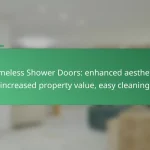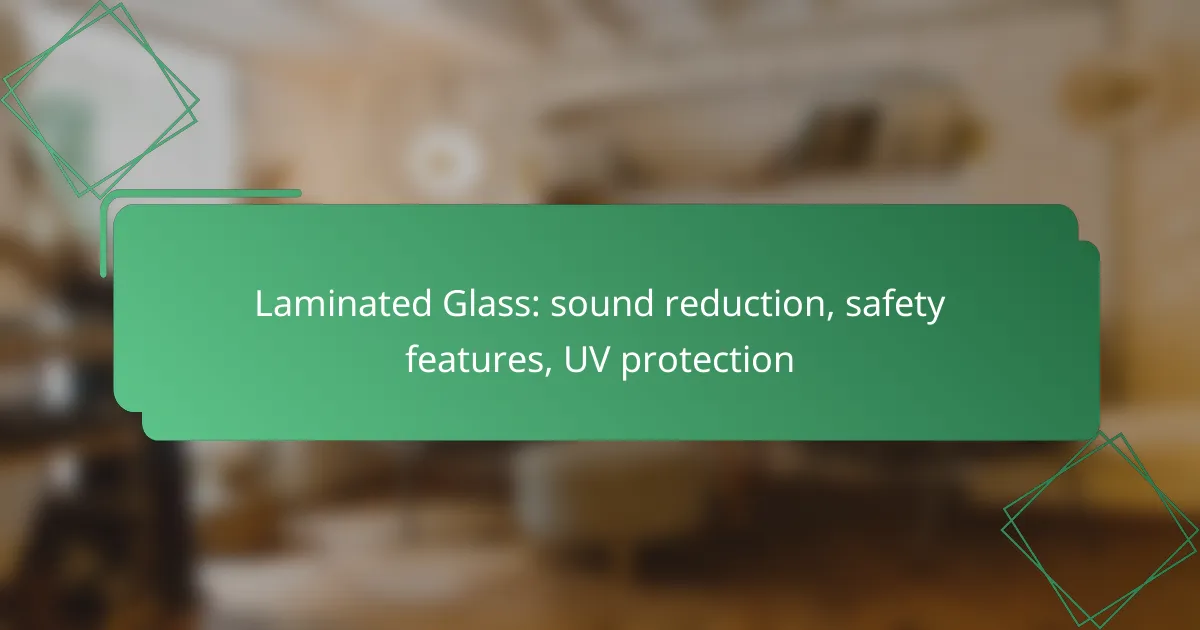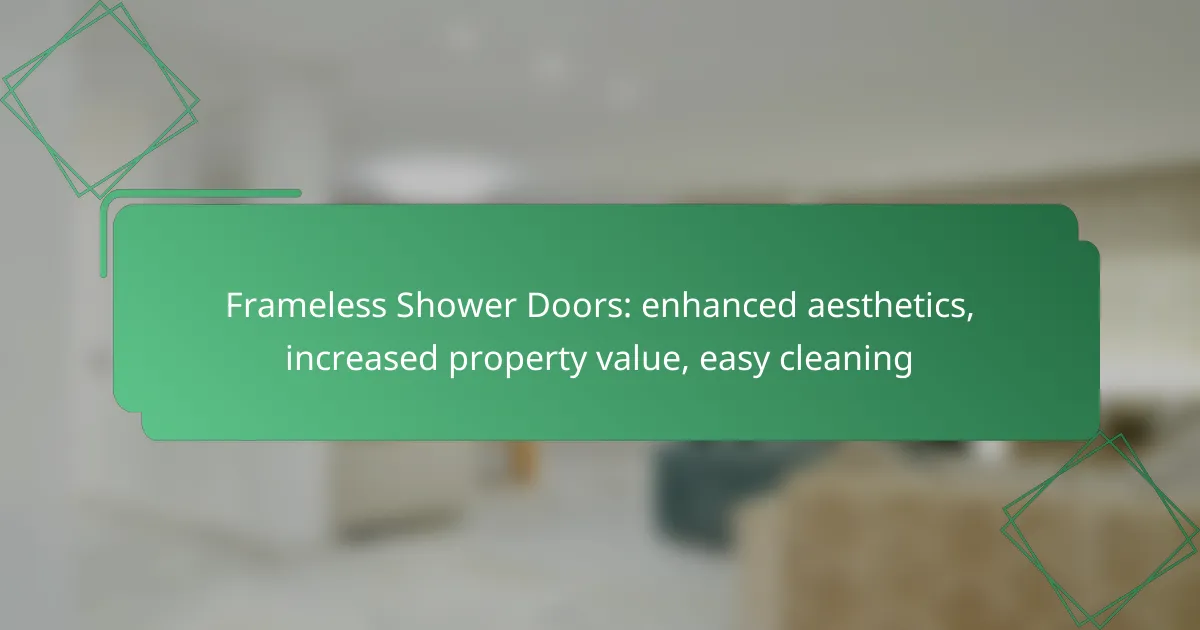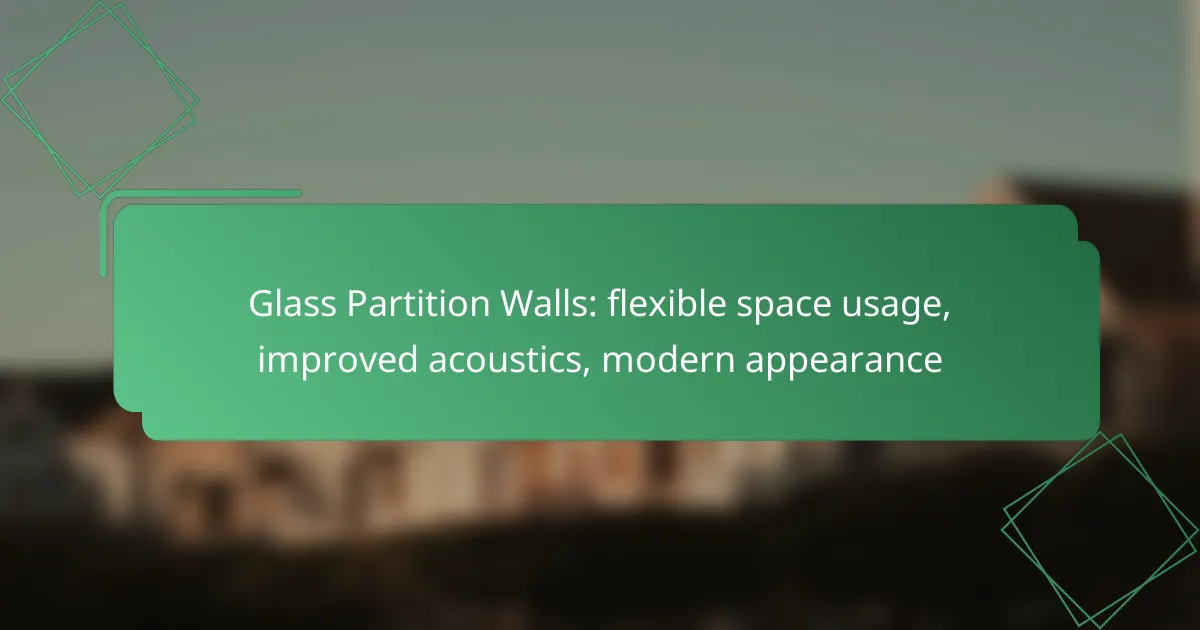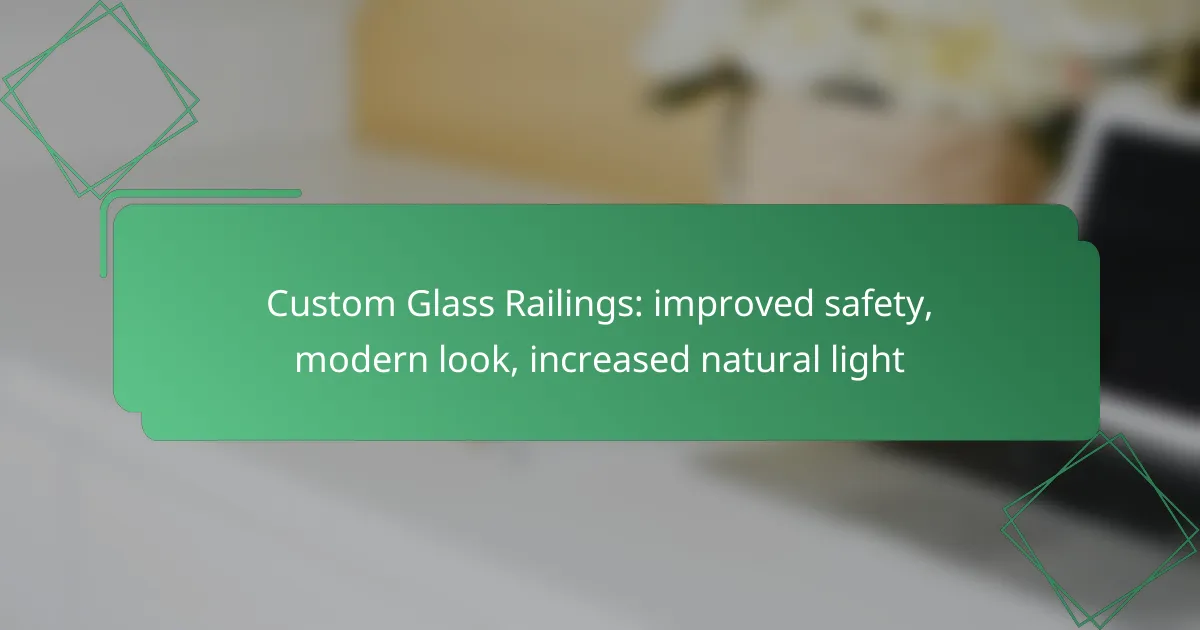Laminated glass is an innovative solution that combines sound reduction, safety features, and UV protection. By incorporating a layer of acoustic interlayer material, it effectively dampens sound transmission, making it ideal for noise-sensitive environments. Additionally, its unique construction ensures that the glass holds together when shattered, enhancing safety and reducing injury risk. Furthermore, laminated glass blocks a significant portion of harmful ultraviolet rays, protecting both interiors and occupants from UV damage.

How does laminated glass reduce sound?
Laminated glass reduces sound by incorporating a layer of acoustic interlayer material between two sheets of glass. This design dampens vibrations and minimizes sound transmission, making it an effective choice for noise reduction in various environments.
Noise reduction through acoustic interlayers
Acoustic interlayers are specialized materials that absorb sound waves, preventing them from passing through the glass. These layers can be made from polyvinyl butyral (PVB) or ethylene-vinyl acetate (EVA), which enhance the glass’s ability to block noise. The thickness and composition of the interlayer significantly influence the overall sound insulation performance.
When selecting laminated glass for sound reduction, consider the type of interlayer used, as different materials offer varying levels of acoustic performance. A thicker interlayer generally provides better sound attenuation, making it suitable for high-noise areas.
Decibel reduction capabilities
Laminated glass can achieve decibel reductions typically ranging from 30 to 50 dB, depending on the thickness of the glass and the interlayer. This level of sound insulation is effective for reducing ambient noise from traffic, construction, or other external sources. The higher the decibel reduction, the quieter the indoor environment will be.
For optimal soundproofing, consider using laminated glass with multiple layers or varying thicknesses, as this can enhance the overall sound reduction capabilities. It’s essential to consult with professionals to determine the best configuration for your specific needs.
Applications in residential and commercial buildings
Laminated glass is widely used in both residential and commercial buildings to improve sound insulation. In homes, it is often installed in windows and sliding doors to create a quieter living space. In commercial settings, such as offices and hotels, laminated glass helps reduce noise pollution, enhancing comfort for occupants.
Additionally, laminated glass is beneficial in urban areas where noise from streets and public transport can be disruptive. Its sound-reducing properties make it a popular choice for buildings located near airports, highways, or busy city centers, ensuring a more peaceful environment for residents and workers alike.
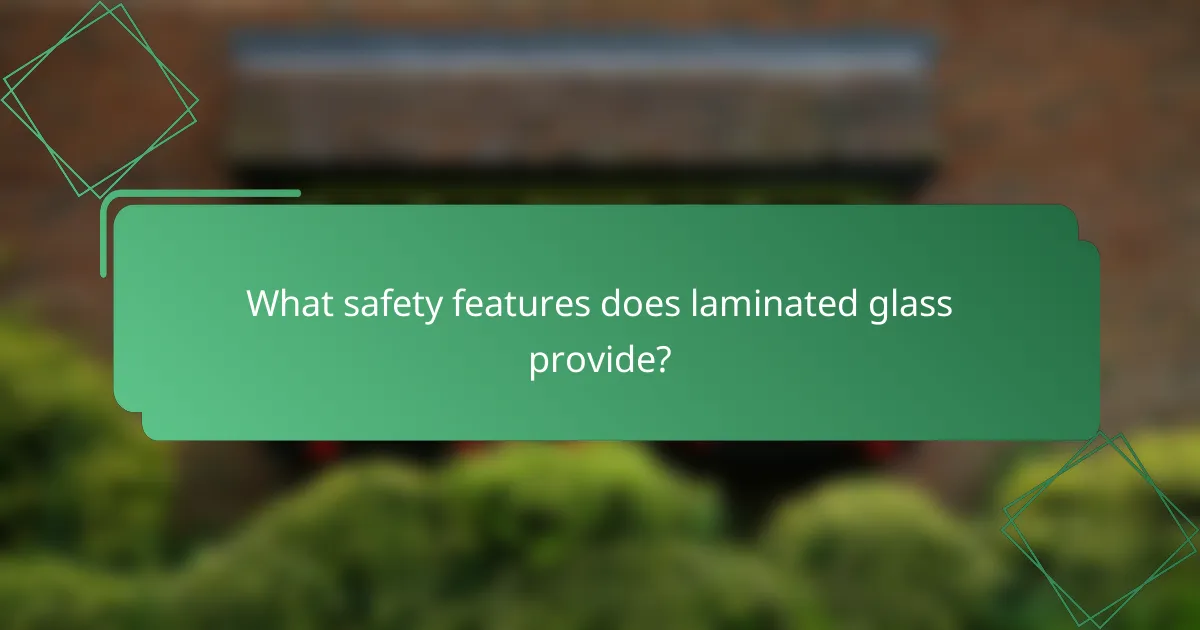
What safety features does laminated glass provide?
Laminated glass offers significant safety features, primarily through its ability to hold together when shattered, thereby reducing the risk of injury. This type of glass is made by sandwiching a layer of polyvinyl butyral (PVB) between two sheets of glass, which enhances its durability and impact resistance.
Impact resistance and shatter prevention
The impact resistance of laminated glass is one of its key safety features. When struck, the PVB layer absorbs energy and keeps the glass fragments intact, preventing them from scattering. This characteristic makes it an excellent choice for areas prone to accidents or vandalism.
In practical terms, laminated glass can withstand impacts that would shatter standard glass. It is often used in car windshields, where safety is paramount, as well as in residential and commercial buildings to enhance security.
Safety applications in high-risk environments
Laminated glass is widely used in high-risk environments such as schools, hospitals, and storefronts due to its protective qualities. Its ability to resist breakage makes it ideal for applications where safety is critical, such as in glass doors and windows that face public areas.
Additionally, laminated glass is often required in compliance with building codes for specific applications, ensuring that it meets safety standards. For instance, in many regions, laminated glass is mandated for use in areas where there is a high likelihood of human impact, such as near swimming pools or in schools.
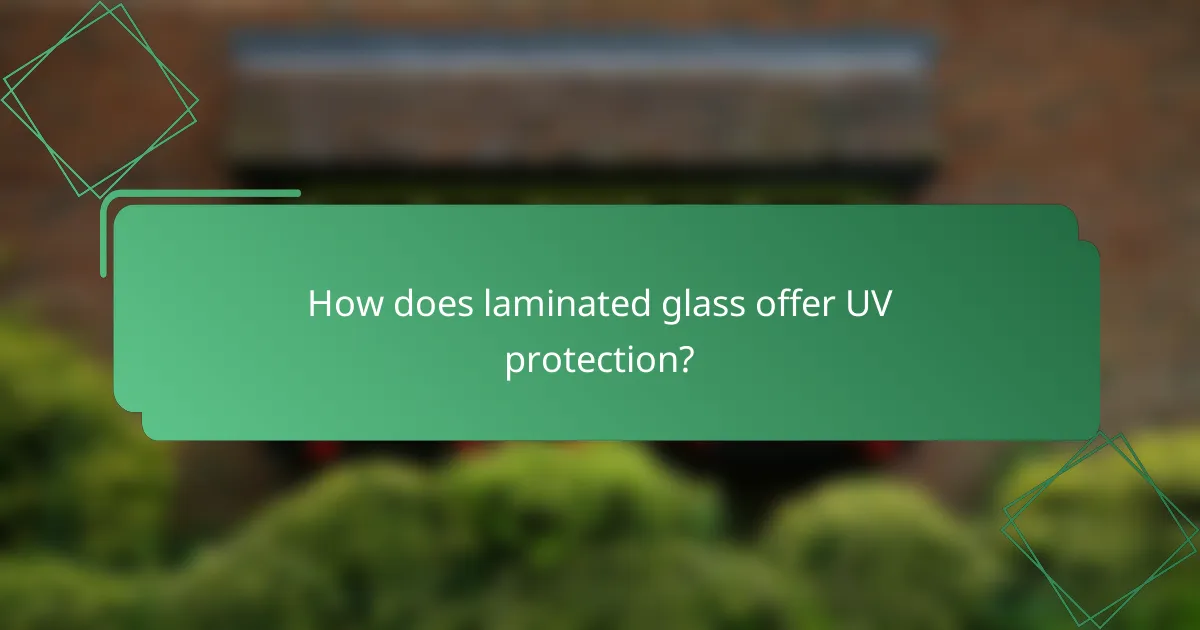
How does laminated glass offer UV protection?
Laminated glass provides UV protection by incorporating a layer of polyvinyl butyral (PVB) between two sheets of glass. This layer effectively absorbs and blocks a significant portion of harmful ultraviolet rays, reducing their penetration into indoor spaces.
UV filtering capabilities
The UV filtering capabilities of laminated glass can block up to 99% of UV radiation, depending on the specific product used. This makes it an excellent choice for areas exposed to direct sunlight, such as windows in homes and vehicles. The effectiveness of this filtering can vary based on the thickness of the glass and the type of PVB used.
Benefits for skin and interior furnishings
Using laminated glass can significantly reduce the risk of skin damage caused by UV exposure, which is particularly beneficial for individuals with sensitive skin or those who spend long hours indoors near windows. Additionally, laminated glass helps protect interior furnishings from fading, preserving the appearance and longevity of carpets, furniture, and artwork.
By minimizing UV exposure, laminated glass contributes to a healthier living environment and can enhance the overall comfort of a space. This makes it a smart investment for homeowners looking to maintain both their health and their property’s aesthetic appeal.

What are the benefits of laminated glass in Canada?
Laminated glass offers several advantages in Canada, including enhanced sound reduction, improved safety features, and UV protection. These benefits make it a popular choice for residential and commercial buildings, particularly in urban areas where noise and safety concerns are prevalent.
Energy efficiency in Canadian climates
Laminated glass contributes to energy efficiency by providing better insulation compared to standard glass. Its multi-layer construction helps reduce heat loss during cold winters and minimizes heat gain in the summer, leading to lower energy bills.
In Canadian climates, where temperatures can vary significantly, using laminated glass can help maintain a comfortable indoor environment. Homeowners can expect a reduction in heating and cooling costs, making it a cost-effective option over time.
Regulatory compliance for building codes
In Canada, laminated glass often meets or exceeds building code requirements for safety and performance. Many provinces have specific regulations that mandate the use of laminated glass in certain applications, such as in high-rise buildings or areas prone to severe weather.
When selecting laminated glass, it is essential to consult local building codes to ensure compliance. This not only enhances safety but also protects property owners from potential liabilities associated with glass failures.

How to choose laminated glass for your project?
Choosing laminated glass involves assessing your project’s specific needs for sound reduction, safety features, and UV protection. Consider factors such as thickness, interlayer materials, and local building regulations to ensure optimal performance.
Factors to consider for sound reduction
When selecting laminated glass for sound reduction, focus on the glass thickness and the type of interlayer used. Thicker glass panels and specialized acoustic interlayers can significantly enhance sound insulation, often reducing noise levels by 30% or more.
Additionally, consider the overall design of your project. Sealing gaps and ensuring proper installation can further improve soundproofing. For residential applications, a combination of 6mm glass with a 0.76mm interlayer is commonly effective.
Evaluating safety features for specific needs
Laminated glass offers enhanced safety features, making it ideal for areas prone to impact or breakage. The interlayer holds the glass fragments together upon shattering, reducing the risk of injury. This is particularly important for locations like schools or public buildings.
Assess your safety requirements based on potential hazards. For instance, using laminated glass with a thicker interlayer can provide additional security against forced entry. Always check local building codes for specific safety standards that may apply to your project.
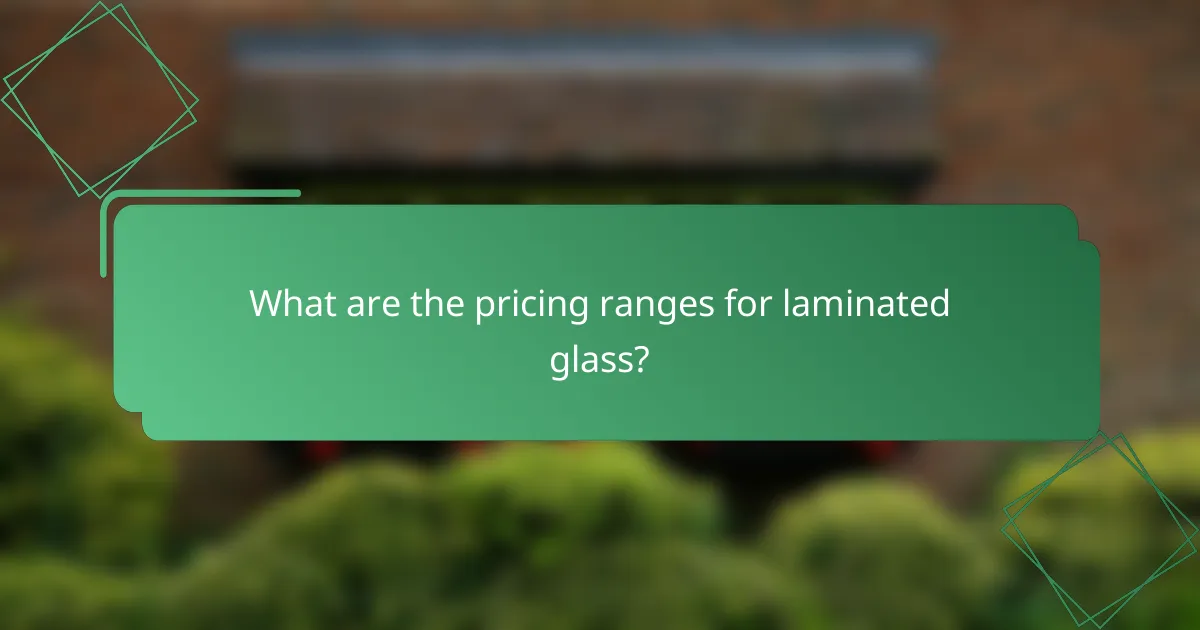
What are the pricing ranges for laminated glass?
The pricing for laminated glass typically ranges from around $30 to $100 per square foot, depending on various factors such as thickness, size, and specific features. This type of glass is valued for its sound reduction, safety features, and UV protection, which can influence its cost significantly.
Cost factors in residential applications
In residential settings, the cost of laminated glass can be influenced by several factors including the size of the windows, the thickness of the glass, and any additional features like tinting or coatings. For example, thicker glass generally offers better sound insulation and safety but comes at a higher price point.
Homeowners should also consider installation costs, which can vary based on the complexity of the project. On average, installation might add an additional $10 to $30 per square foot to the overall cost.
Commercial pricing considerations
Commercial applications of laminated glass often involve larger quantities and specific performance requirements, which can affect pricing. Bulk purchases may lead to discounts, and the cost can range from $25 to $90 per square foot depending on the project scale and specifications.
Additionally, compliance with local building codes and regulations can impact costs. Businesses should factor in potential expenses for custom sizes or enhanced safety features, which are often necessary for commercial environments.

What are the emerging trends in laminated glass technology?
Emerging trends in laminated glass technology focus on enhancing performance through improved sound reduction, safety features, and UV protection. Innovations are driven by the demand for eco-friendly materials, advanced design options, and increased functionality in various applications.
Advancements in eco-friendly materials
Recent developments in laminated glass include the use of sustainable materials, such as recycled plastics and low-emission adhesives. These eco-friendly options not only reduce environmental impact but also maintain high performance standards in sound insulation and safety.
Manufacturers are increasingly adopting materials that comply with green building certifications, such as LEED. This trend encourages the use of laminated glass in environmentally conscious construction projects, appealing to both builders and consumers.
Innovations in design and aesthetics
Design innovations in laminated glass allow for greater customization, including various colors, textures, and patterns. This flexibility enables architects and designers to create visually appealing structures while benefiting from the functional advantages of laminated glass.
Additionally, advancements in printing technology enable the incorporation of intricate designs directly onto the glass surface. This not only enhances aesthetic appeal but also provides opportunities for branding and personalization in commercial spaces.




